War is raging and misery has spread like a shroud over the Middle East.
In the setting synonymous with dystopia, a perpetual hopeless drabness that leaves no optimism for anything, the colour red briefly intrudes. The colour of the Palestinian Santa Claus in Jerusalem, who is a small, imperceptible ray of optimism.
These days, despite the war raging in Gaza during the Christmas season, he sent his wishes again. Louder than ever to be heard everywhere and to finally put an end to this war that is causing untold misery.
On a camel instead of a sleigh, Santa Claus sent his wishes from the Old City of Jerusalem.
For 17 years now during Christmas, the Christian by religion, Palestinian former basketball player, Issa Kassissieh has been wearing his red uniform, black boots and disguising himself as the children’s favourite Santa Claus.
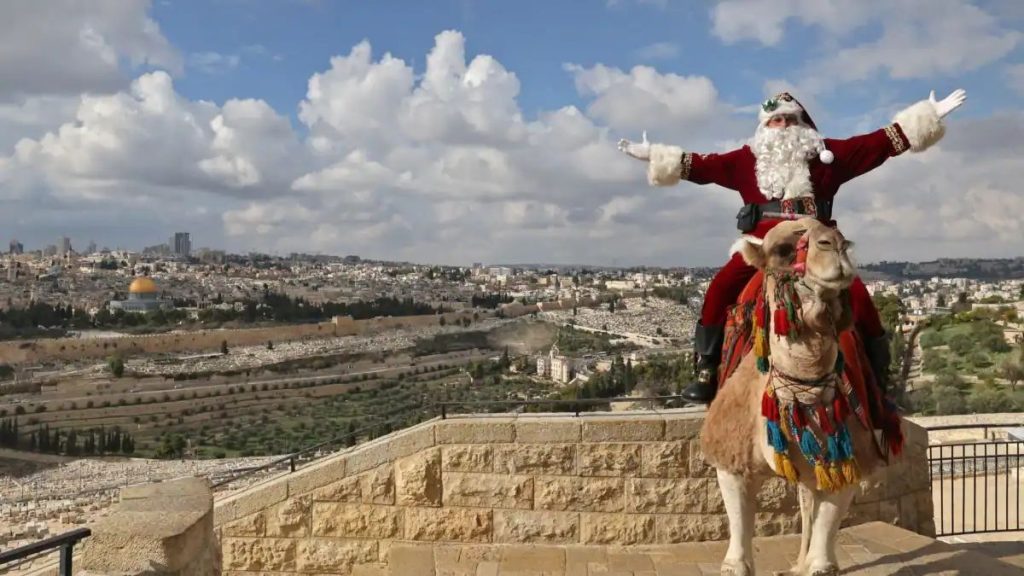
The cave of Isa
“The most important message to send from the heart of the world, Jerusalem, is the message of peace and hope from the Holy Land. I wish that this war will stop,” the Palestinian Santa Claus said.
Under other circumstances, Jerusalem cradles civilisation, the Holy City where three monotheistic religions meet along with worshippers. The war, however, had other plans. Until last year, the streets would glow with red and green lights every December.
Christian pilgrims would arrive in the eastern part of the city, annexed by Israel, to pray in the many churches. People from every corner of the earth would take part, regardless of whether they believed or not. They would come across a figure, mounted on a camel, dressed in Santa Claus’ clothes, wishing Merry Christmas.
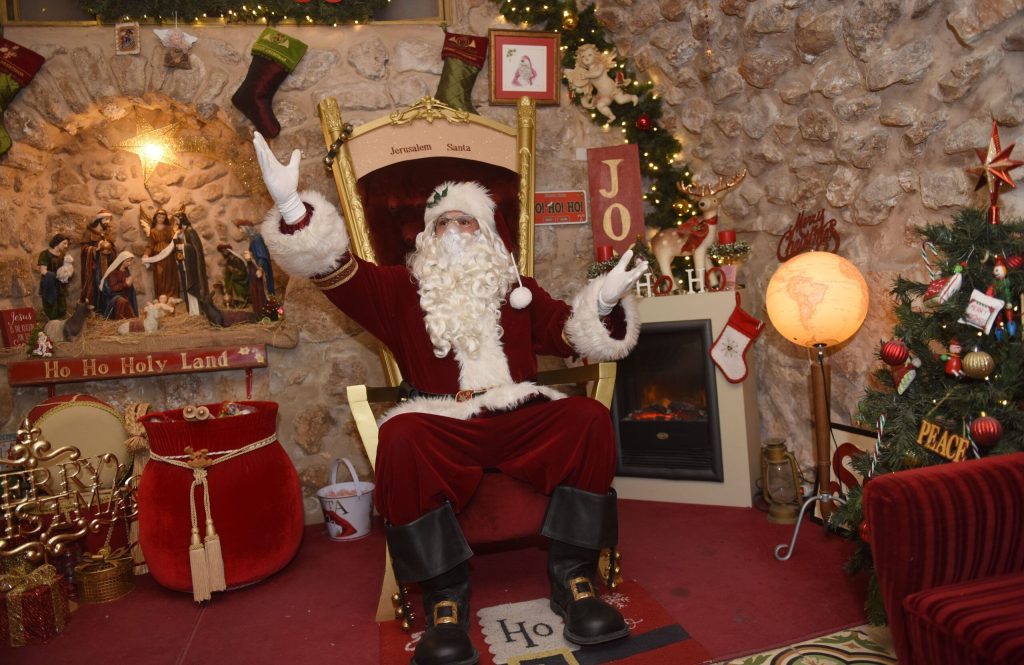
Seven years ago, Issa Kassissieh, 52, a former basketball player, turned the ground floor of his 700-year-old house into a cave.
Here he greets visitors who want to meet the Palestinian Santa Claus, talk to him, have their picture taken with him, drink mulled wine and take a candy on the road. A year ago he welcomed the first visitors with their families who queued up to see him.
“We are dealing with many religions here in Jerusalem, we have Muslims, Christians and Jews. They all come to my house. I open my arms to everyone,” Kassissieh said.
His height – almost six feet tall – doesn’t seem to scare children when they approach him.
8-year-old, Marua, a Palestinian Muslim, expressed her love for him. “I’m not Christian, but I love Santa Claus, and we have a Christmas tree at home.”
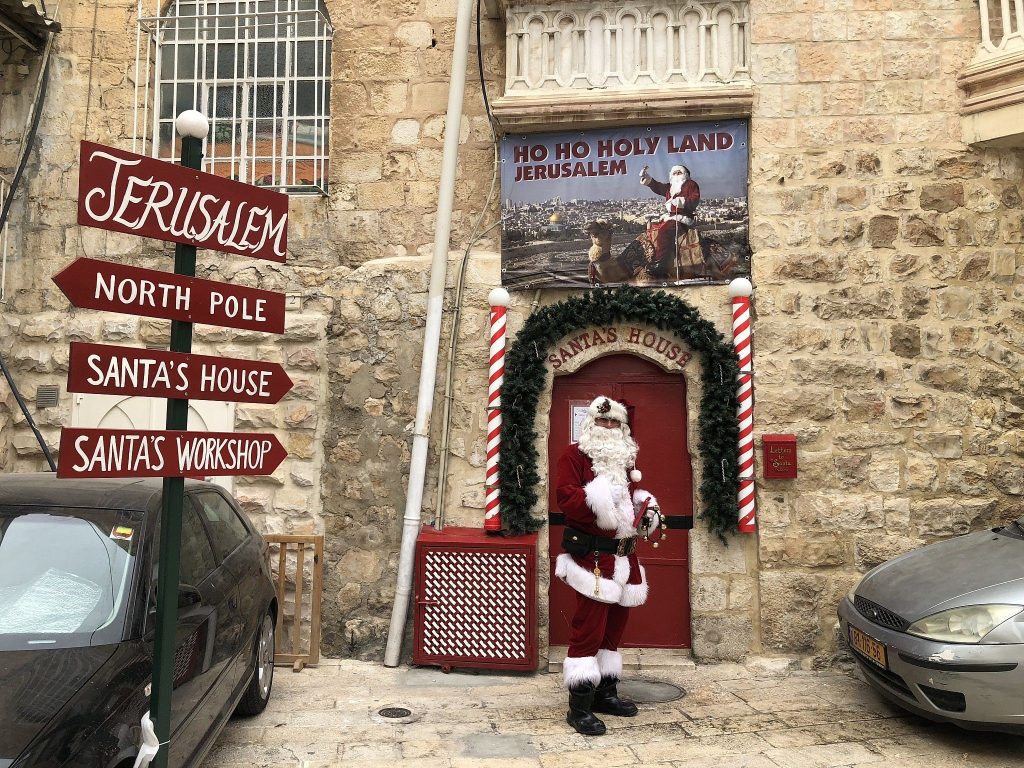
Who is the Palestinian Santa Claus?
A mystery? No, he said.
“My name is Isa Anis Kassissieh, I am from Jerusalem, from the Old City of Jerusalem, my family has lived here for over 900 years. I became a Santa Claus 17 years ago. The story starts from the fact that my father liked to wear the Santa Claus costume for his children (my sister and me),” he explained.
“In 2016 I got a call from the Santa Claus School of New York, they asked me, ‘are you Santa Claus from Jerusalem?’ I said ‘yes’ and they said they wanted to invite me to the Santa Claus School in Denver, Colorado.”
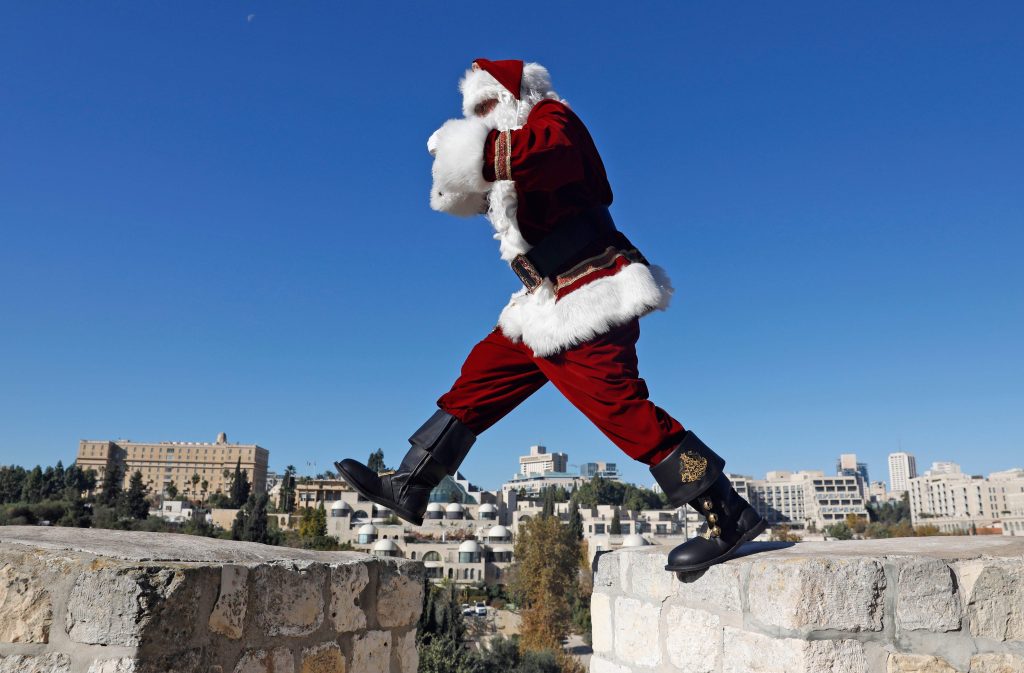
The offer left him stunned.
“I took a breath and promised God that I want to give my best to the children and the Holy Land,” he said.
“Everyone loves coming here, and there are a lot of families who say, ‘Oh, we don’t have to travel out of the country now. We have Santa Claus in Jerusalem, we have the spirit of Christmas in Jerusalem’.”
What every child asks him, however, is if he will bring home an iPhone. But he promises nothing. He tells them, “let’s pray and if you’re on my good list, you’ll get it.”
Everyone knows him now when he’s riding around on his camel in the old city of Jerusalem.
“It’s important that our kids have fun, but we also want them to know the real story behind Christmas. It’s important to send a message of love and peace from Jerusalem, it’s the heart of the world. When we have peace here, we will have peace around the world,” he said.
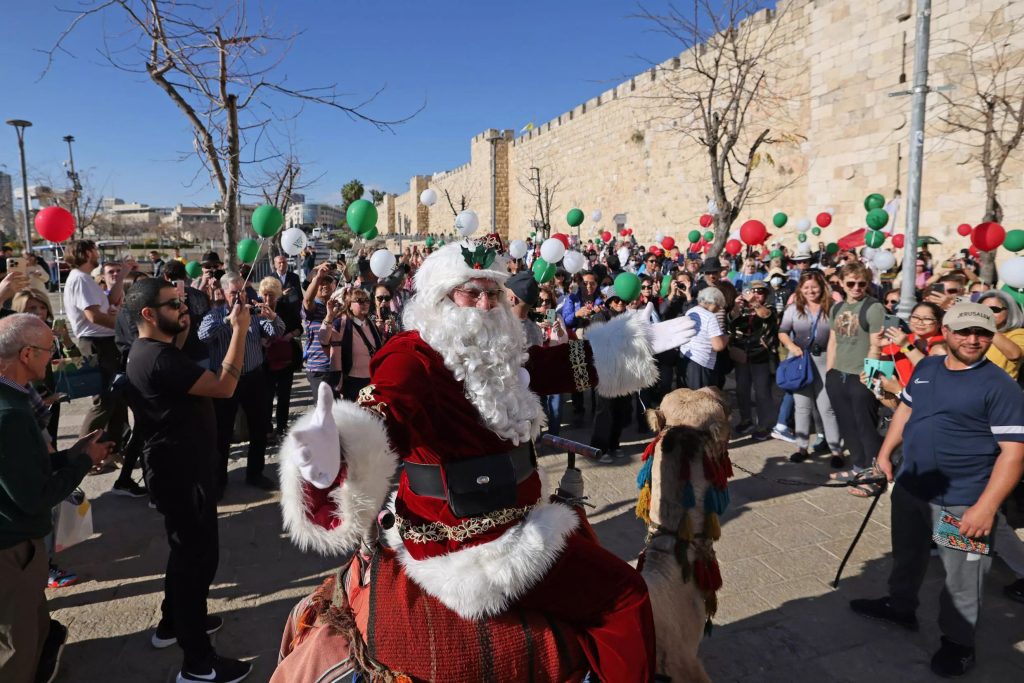
The first steps
17 years ago, Isa discovered an old Santa Claus costume used by his father. He tried it on, it suited him so well that, wearing it, he went to the Jaffa Gate which was nearby. Children gathered and then he realised that “as a child I did not get to have this happiness, so it is time to give it to the children in Jerusalem.”
“Traveling around the world during the Christmas season, I realised how deeply embedded Santa Claus is in the culture of the West, while here, in the place where Christmas began, we only know Santa Claus from TV and movies,” he said.
The following year, Isa dressed up as Santa Claus again, but this time he also rented a camel. Since then, every Christmas, he is riding the camel. Santa Claus makes his rounds of the Old Town and in the afternoons he receives visits from children and their families at the “Santa Claus House.”
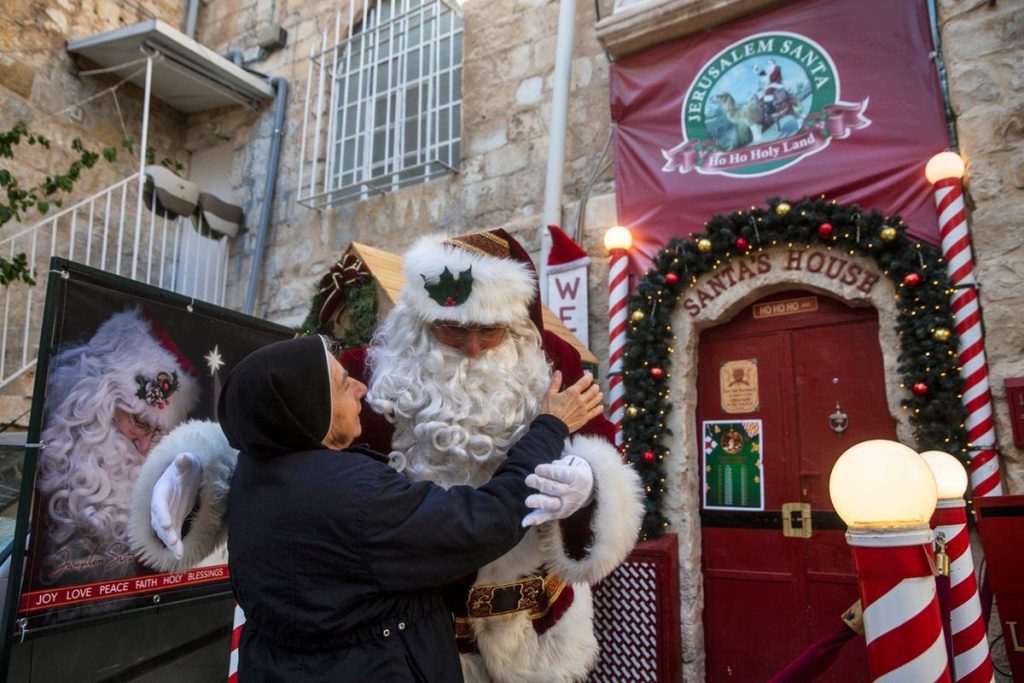
On days close to Christmas, visitors can wait in line for up to two hours to get in. Isa mostly funds these activities himself, but he also accepts donations from believers and organisations around the world.
When he went to Denver, Colorado, he learned to make wooden toys, make Christmas cookies and correctly say the “ho, ho, ho” that a proper Santa exclaims every now and then.
“The sound has to come from the belly,” he clarified.
“To be Santa Claus, everything you do must come from the heart, and the heart must be full of hope, love and peace.”
A few years ago, he enrolled for further studies at the Charles W. Howard Santa Claus School in Michigan. The famous school, which was founded 83 years ago, has trained over 5,000 Santas.
“I was told: “You’re the first Santa Claus from the Middle East and the Holy Land,” Isa emphasised.
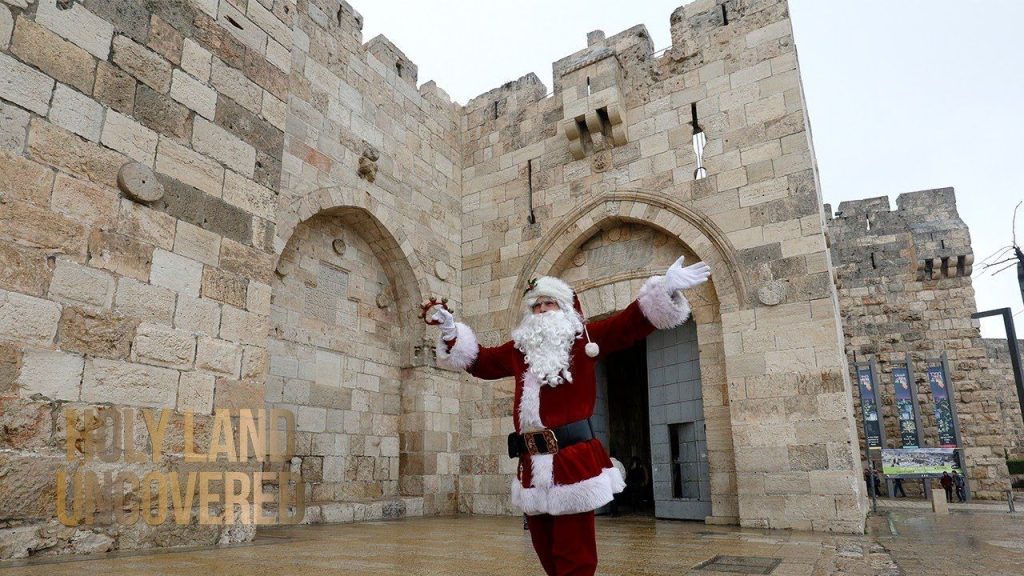
The Greek roots of the Palestinian Santa Claus
Isa earns his living as a basketball coach in West Jerusalem. For 700 years, “Santa’s House” has been the family home of the Kassiyehs, who were the first Christian Orthodox family in East Jerusalem.
“My family came to Jerusalem 900 years ago, but we don’t know exactly where they came from. Some family members claim that we came from Greece. Others believe we came from the Palestinian city of Lydda,” he explained.

Some centuries back, the Kassiyehs started a tile industry. Many of them decorate the Church of the Resurrection (the Church of the Holy Sepulchre) and other churches in the Holy Land.
Issa has ambitious dreams: he is negotiating with the Jerusalem municipality to organise a Santa Claus Conference, the first in Israel’s history. He intends to invite 50 Santas from all over the world and organise a parade through the streets of the city.
The war spoiled his plans, and as he said over and over again: “the most important message to send is the message of peace and hope from the Holy Land. I wish that this war will stop.”
